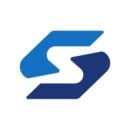When Dennis Baskin was charged with building an engineering development center and hiring the needed talent, the senior director and head of engineering at group fundraising platform Snap! Raise quickly saw that exponential team growth comes with its own challenges. “I realized how much more communication was needed as the team grew, which was exasperated by the remote work model we now employ,” he said. “Communicating with a small handful of people is very different from communicating with multiple groups across different time zones working on different projects.”
Since the beginning of the pandemic, tech companies have had to adjust and reevaluate their team structures, needs and strategies to cope with the skyrocketing demand for tech professionals, particularly software engineers. And this trend is not going away any time soon: The U.S. Bureau of Labor Statistics predicted a 22 percent increase in demand for software developers, QA analysts and testers from 2020 to 2030. While this might seem like a simple matter of hiring more engineers, rarely is the situation on the ground that simple. Close-knit teams must be quickly scaled and expanded into a tiered system of individual contributors and leaders across a range of projects, requiring not only a phase of adjustment but also close attention to the employee experience.
“It was important to me that we focus on cultural fit as much as technical excellence,” Baskin added.
There is a lot of planning, organization and communication involved in the rapid expansion of an engineering team, so how do you manage this change? Built In Seattle sat down with Baskin to talk further about his role in Snap! Raise’s engineering expansion, the growth process and the challenges he faced along the way.
Why did your engineering team need to be expanded so quickly?
We believe in diverse, lean teams sitting within larger, cross-functional groups to focus on a specific domain vertical. Clearer context and domain focus allows engineers to feel more ownership and build better products.
In 2020, the company transitioned to remote work due to the pandemic. Like everyone else, we were greatly impacted by this, and it caused us to drastically reduce our expenses, including headcount. However, we came out of the pandemic stronger than ever.
We devised a company strategy that meant creating multiple new product lines to diversify our revenue streams and change our business model from transactional to SaaS. Consequently, we had to greatly expand our development services. Moving fast was crucial as reducing time to market for a new suite of products is critical.
We decided to stay mostly remote and build an engineering center of excellence in the Dallas area. I was hired to create this development center and hire the best talent I could find. To expedite new hires’ ramp-up time, I employed contract resources to help lay the ground for full-time employees. This allowed us to deliver business functionality while growing at speed. With such rapid growth, my focus was on setting standards, building processes and ensuring consistency across teams.
What was the process of scaling like and how long did it take?
We scaled the team very quickly, expanding 20 fold in a period of six to nine months. With that type of growth, we were bound to make some mistakes. When hiring 30 or 40 people, some misses were bound to happen along the way. It is very tempting to let one’s standards slip when hiring that many people, but we made sure to keep a consistent standard of interviewing.
It is fascinating how we can optimize a product that has already been performing well to perform even better.”
What’s the most exciting project your engineering team will be taking on in the next few months?
Today, we’re working on introducing multi-variant testing to our platform. It is fascinating how we can tune and optimize a product that has already been performing well to perform even better. We have started our first tests and are already seeing incredible improvements on conversion and engagement with our customers. The possibilities of this capability are endless and invaluable. It is a new muscle for the company, and we are all learning how valuable a tool this type of testing can be.






